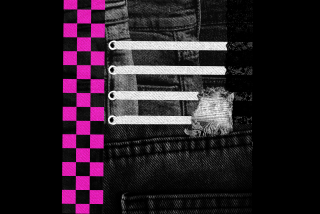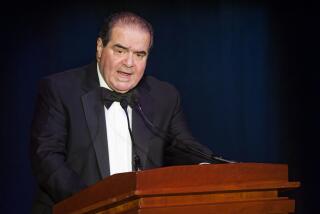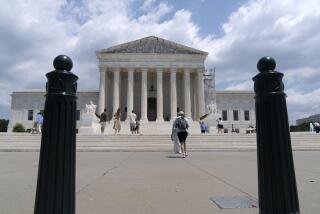Free-speech fashion
IF STUDENTS AT A PUBLIC SCHOOL have a 1st Amendment right to wear black armbands as an antiwar protest — and they do, according to the U.S. Supreme Court — does a Christian student have a similar right to wear a T-shirt proclaiming “Homosexuality Is Shameful”? He should, despite a recent federal appeals court ruling so sweeping and loosely reasoned that it virtually begs the Supreme Court to overrule it.
Offended by the fact that Poway High School near San Diego had declared a “Day of Silence” designed to teach tolerance of gay and lesbian students, sophomore Tyler Harper wore a T-shirt with the “Homosexuality Is Shameful” message on the back and this message on the front: “Be Ashamed, Our School Embraced What God Has Condemned.” A teacher told him that the shirt violated the school dress code and was inflammatory. When he refused to remove it, he was kept in a school office for the rest of the day.
Harper and his parents asked a U.S. District Court to issue an injunction preventing the school from interfering with his constitutional rights. The court declined, and its ruling was affirmed last week by the U.S. 9th Circuit Court of Appeals. Unfortunately, in explaining why the school was within its rights, Judge Stephen Reinhardt misapplied the Supreme Court’s 1969 armband decision and created a “right” that doesn’t exist: the right not to be offended.
The armband case gave schools the constitutional authority to suppress student speech only when it poses a “substantial disruption of or material interference with school activities.” A federal district judge had cited that exception in ruling for the school district in the current T-shirt case.
But Reinhardt, joined by another circuit judge, tacked on a spongier rationale: that the T-shirt was “injurious to gay and lesbian students and interfered with their right to learn.” He maintained students should be protected not only from face-to-face harassment but also from “derogatory and injurious remarks directed at students’ minority status such as race, religion and sexual orientation.”
There are several problems with this broad formulation. Harper’s T-shirt did not feature lewd or “fighting” words. It did not attack individual gay students. Reinhardt’s expansive definition could cover all sorts of utterances that gay students might find offensive — like a classmate’s praise for the pope’s opposition to gay priests or a civics class comment that states shouldn’t legalize same-sex marriage.
Students certainly have a right to learn, free of bullying and harassment. But they also have the right to express opinions that their classmates might find offensive — as long as doing so doesn’t pose a substantial threat of disruption.
Thirty-seven years after the armband decision, some may wish the high court had never let the genie of student free speech out of the constitutional bottle. It is also true that gay students have been victims of bullying that no one believes is protected by the 1st Amendment. But Reinhardt’s opinion does gay students no service by endowing them with a “right” to be shielded from the offensive opinions of others.
More to Read
A cure for the common opinion
Get thought-provoking perspectives with our weekly newsletter.
You may occasionally receive promotional content from the Los Angeles Times.










